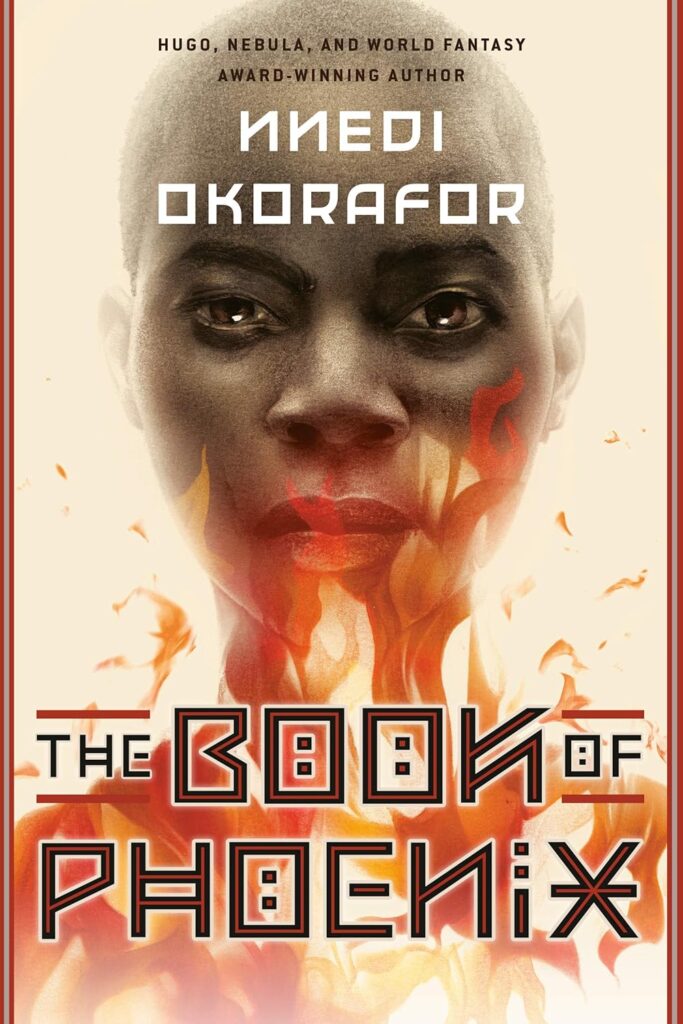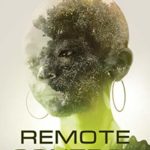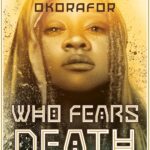
The Book of Phoenix by Nnedi Okorafur adds to the great Africanfuturist epic Okorafur began in Who Fears Death (and which she continues with her new novella, She Who Knows). This is a prequel that describes the destruction that led to the world of the first novel, with its sharp division between light and dark skinned peoples, a system set forth in the Great Book, the Bible-like text that dominates belief. The Book of Phoenix tells how the Great Book came to be written and how its original message of rebellion and freedom was falsified into the very text that became a source of oppression for dark-skinned people.
The novel has a dual structure with a framing device that tells how the main narrative, recorded on an electronic device, came to be discovered many centuries after the events it describes. That recorded story is the personal history of the dazzling Phoenix. As she tells us early on, Phoenix narrates her own story by trusting only to “the old African tools of story. Spoken words.” Those words, however, are in danger of being forever misinterpreted when the writer in the framing narrative attempts to put them in written form.
The Book of Phoenix is the exciting adventure of an accelerated human of African descent, whose DNA and body have been worked on by ruthless scientists and experimenters of a group called the Big Eye. After just two years, this woman, Phoenix, has grown and matured into the body of a forty year-old and is intended by Big Eye scientists and genetic engineers to stay that way.
She knows nothing of why Big Eye has raised her, only that she has the ability to generate incredible heat that can burn anyone who touches her when she’s in that state. But there is much more to her than that. Her vast powers as a weapon are gradually revealed to her as she comes to realize that the building she was raised in, Tower 7, is her prison, and she tries to break out.
Tower 7 is a skyscraper in a future New York after climate change has flooded much of the city. Its upper floors contain the rooms for all the Big Eye experiments, whose movements around the hallways are guided by red lines that appear automatically when they step outside their rooms. One of the inmates is a man named Saeed who eats only non-food, like ground glass and rust flakes, and who becomes Phoenix’s only true friend.
There is a woman whose spine has been so altered that she can turn her head around backwards, another has the teeth and claws of a lion, and there are two men joined together. There is a man named Mmuo who can walk through walls and another, known only as seven, whom Phoenix first sees suspended in a great glass case with his wings spread wide, like a Christ figure.
One day Saeed tells her he has seen something horrible that he can’t get out of his mind. He takes an apple from Phoenix, which she thinks nothing of since he likes to use human food as the subject of his paintings. But soon she is told by her main keeper, Bumi, that Saeed ate the apple and died, since his system cannot tolerate such food.
Deeply aggrieved, Phoenix makes her attempt to escape. First she tries to find the room with the terrible thing that sent Saeed into despair. Before soldiers catch up with her, she glimpses what appears to be a portal into another time where the Holocaust is taking place. Dead bodies are stacked up and pushed into mass graves. But she has no time to linger or understand as Big Eye troops appear in the halls. She winds up in a great atrium on the ground floor of Tower 7 where a huge tree has been planted. The growth of this tree has pushed through the ceilings of every floor but here in the atrium its huge trunk is surrounded by a dazzling variety of plants. It is the only part of the building that the public is allowed to see. When Phoenix gets there, with Big Eye soldiers in pursuit, she starts to glow and generate a heat that makes all the plants grow without limit. The great tree itself bursts out of its confinement and soon brings down the whole building. Phoenix dies in the ruins.
But true to her name, her body regenerates after some days, by which time the fallen tower has become a tourist attraction. She flees and realizes that a painful bulge in her back is a set of wings that burst out of her. Now she can fly as well as burn as hot as the sun and sets off on a journey that takes her to Africa, but the Big Eye people and their soldiers follow her everywhere. She gradually develops a plan to destroy all the Big Eye towers to release her great anger. The result is earth-shaking, a cataclysm that changes human history forever.
The Book of Phoenix is full of beautiful writing and taut lines capturing the changes Phoenix undergoes as she realizes the depth of her anger and the fullness of her power. ” ‘Rebellion,’ I whispered to myself. And the word bloomed from my lips like a flower.” (Location 201)“You look like a sleeping bolt of lightning. Power at peace.” (Location 1674) She learns deep lessons about new forms of colonization and slavery, as the Big Eye experiment solely with DNA and people of African descent.“We’re so colonized that we build our own shackles.” (Location 1737) And always she brings us back to the act of story-telling itself.
“One must stop time to listen to a story. The storyteller starts it again. She starts it in her own place, in her own moment, in her own point of view. As long as you listen, she is in charge of your destiny. You and the storyteller share everything, even your existence. Listen.”
The Book of Phoenix, Kindle edition, Location 951
Each novel and novella that Nnedi Okorafur adds to this ongoing epic story seems more powerful than the last. For me The Book of Phoenix is one of the best in the series.





Leave a Reply